Weekend Course
Multiparametric Image Acquisition
ISMRM & SMRT Annual Meeting • 15-20 May 2021

| Concurrent 4 | 13:00 - 13:45 | Moderators: |
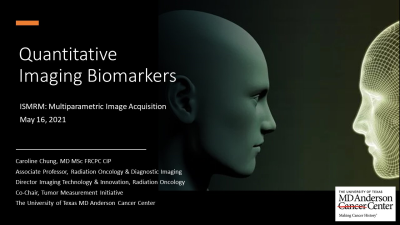 |
Quantitative Imaging Biomarkers
Caroline Chung
This educational session will review the definition of a quantitative imaging biomarker and review clinical applications and opportunities for quantitative imaging biomarkers, including the utility for disease detection, biological and physiological characterization of tumor and normal tissues as well as treatment response assessment and prediction. The critical steps required for the development and deployment of quantitative imaging biomarkers will be reviewed using the oncology application as an example.
|
|
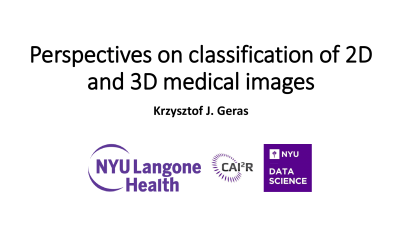 |
Perspectives on classification of 2D and 3D medical images
Krzysztof Geras
Although deep neural networks have already achieved a good performance in many medical image analysis tasks, their clinical implementation is slower than many anticipated a few years ago. One of the critical issues that remains outstanding is the lack of explainability of the commonly used network architectures imported from computer vision. In my talk, I will explain how we created a new deep neural network architecture, tailored to medical image analysis, in which making a prediction is inseparable from explaining it. I will demonstrate how we used this architecture to build strong networks for breast cancer screening exam interpretation.
|
|
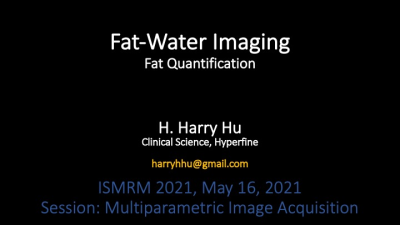 |
Fat-Water Imaging: Fat Quantification
Houchun Hu
The quantification of body adiposity and organ fat has become an important tool in physiology, obesity, and metabolism research. Proton-based MRI methods, namely chemical-shift-encoded water-fat imaging techniques, and the associated proton-density-fat-fraction biomarker, have emerged as popular methods in recent years. These techniques generate informative visualizations of regional and whole-body fat distributions, yield measurements of fat volumes within specific body depots, quantify fat accumulation in abdominal organs and muscles, and even estimate unsaturation levels of triglycerides in adipose tissue. In this presentation, a summary of mainstream fat quantification will be given, highlighting common clinical applications in longitudinal and cross-sectional studies.
|
|
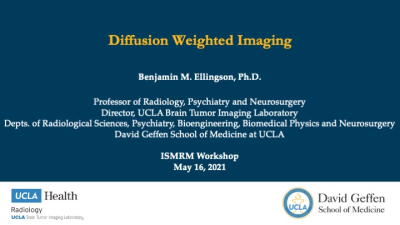 |
Diffusion-Weighted Imaging
Benjamin Ellingson
Diffusion weighted imaging (DWI) is a magnetic resonance (MR) technique for estimating microstructural integrity and organization by quantifying the random, intravoxel incoherent motion of water protons. Restriction and/or alterations in water diffusion within the brain and other organs have been found useful for characterizing and monitoring disease processes and therapeutic responses to a number of pathologies and disorders. The current lecture will cover the fundamental physics, practical set-up, and quantification techniques using the basic DWI experiment, then end with a short discussion of clinical applications and advanced techniques at the cutting-edge of DWI research.
|
|
| MR Relaxometry & Fingerprinting
Jesse Hamilton
This presentation will provide an introduction to relaxometry and Magnetic Resonance Fingerprinting (MRF). In the first half of the talk, we will cover conventional parameter mapping techniques and discuss several state-of-the-art non-fingerprinting approaches for multiparametric mapping. During the second half, we will provide an overview of MRF including pulse sequence design, k-space data sampling, dictionary generation, and pattern matching. Special topics will also be presented, including approaches to correct for confounding factors, dictionary compression, novel low-rank and deep learning reconstruction methods.
|
||
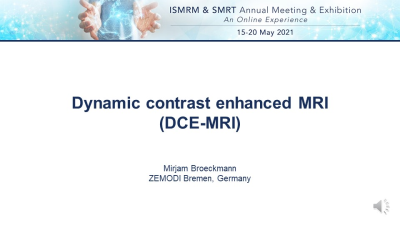 |
Dynamic Contrast-Enhanced MRI
Mirjam Broeckmann
Dynamic contrast enhanced MRI (DCE-MRI) is a completely established method for tumor assessment. Technically it is a series of T1w images acquired before and after contrast agent administration. DCE-MRI visualizes tumor vascularisation and neoangiogenesis. Trade-off between high spatial and high temporal resolution is crucial. Evaluation is made visually or in a semi-quantitative manner, for clinical trials also via a full quantitative model. Rapid wash in and early wash out are the most suspicious findings for malignancy. Possible alternatives are Dynamic Susceptibility Contrast (DSC), Arterial Spin Labeling (ASL) and Dynamic Contrast Enhanced Computer Tomography DCE-CT.
|
|
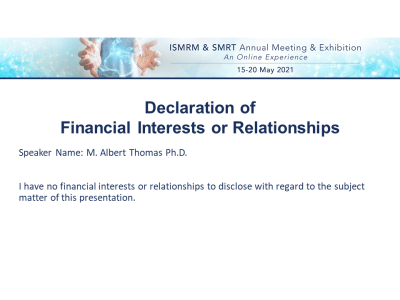 |
MR Spectroscopic Imaging
Michael Thomas
Since its validation in the 1980’s, numerous applications of Magnetic Resonance Spectroscopy (MRS) have been demonstrated in monitoring human tissue metabolites and lipids non-invasively. After recording the anatomical MR images, image-guided localization of volume-of-interest (VOI) and signal acquisition have been accomplished. Phase-encoding gradients can be included into the VOI localization techniques such as PRESS, STEAM, FID and more to record MR Spectroscopic Imaging (MRSI). Longer duration of MRSI can be shortened using echo-planar spectroscopic imaging (EPSI), SI using concentric ring trajectories (SI-CONCEPT), spiral and radial MRSI. In this presentation, we will review these historical developments in assessing tissue biochemistry non-invasively. |
|
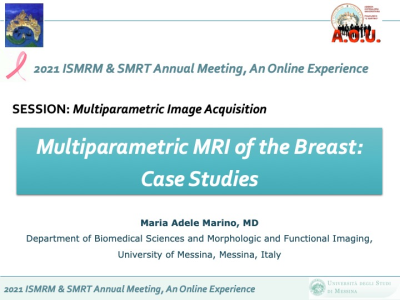 |
Multiparametric MRI of the Breast: Case Studies
Maria Adele Marino
MRI of the breast is a very important technique in breast imaging. The combination of multiple techniques, such as dynamic contrast-enhanced (DCE) MRI, T2-weighted and diffusion weighted imaging (DWI) within the same examination is called multi-parametric MRI (mpMRI). mpMRI protocol interrogates different characteristics of breast tumor and with the combined information an improved diagnosis and characterization of breast tumors is facilitated. Advanced functional techniques are currently being investigated for its clinical value and potential integration in a multiparametric MRI protocols. A case-based presentation will be offered to let the audience familiarize with the most used multiparametric breast MRI protocols.
|
The International Society for Magnetic Resonance in Medicine is accredited by the Accreditation Council for Continuing Medical Education to provide continuing medical education for physicians.